A testnet is one of the most valuable tools for Web3 developers as it provides a secure and safe environment for testing a project’s performance before committing to a mainnet. Furthermore, through testnets, blockchain developers can save valuable time and resources. In the case of Ethereum, the community maintains two central public testnets, one of which is Sepolia. With Sepolia being one of Ethereum’s most prominent proof-of-stake (PoS) testnets, we will take this article to explore the intricacies of this network. So, if you want to learn more about this, join us in this guide as we set out to answer the question, ”what is the Sepolia testnet?”.
To kick things off, the article will explore the intricacies of Sepolia and why testnets are necessary. From there, the article provides a short tutorial for acquiring Sepolia testnet ETH, which developers use to pay for transactions on the network. Next up, we will compare Sepolia to other networks, such as Goerli, which is the other testnet currently maintained by the Ethereum community. In the final section of this guide, you will learn about Sepolia Etherscan, a blockchain explorer for the Sepolia testnet!
If you are already familiar with the Sepolia testnet, consider checking out additional content here at Moralis’ Web3 blog. For example, read up on ethers.js vs Web3 streams or learn how to deploy an AWS Lambda function. Moreover, if you want to get into Web3 development, sign up with Moralis now! With an account at hand, you receive immediate access to tools such as Moralis’ Web3 APIs, enabling you to unlock the full power of blockchain technology!
What is the Sepolia Testnet?
Sepolia is one of Ethereum’s most prominent proof-of-stake (PoS) testnets and was initially introduced in October 2021. Further, Sepolia is one of two primary testnets – along with Goerli – that have not been deprecated. This means that Sepolia is currently maintained by client developers ensuring that it is a safe and accurate test environment.
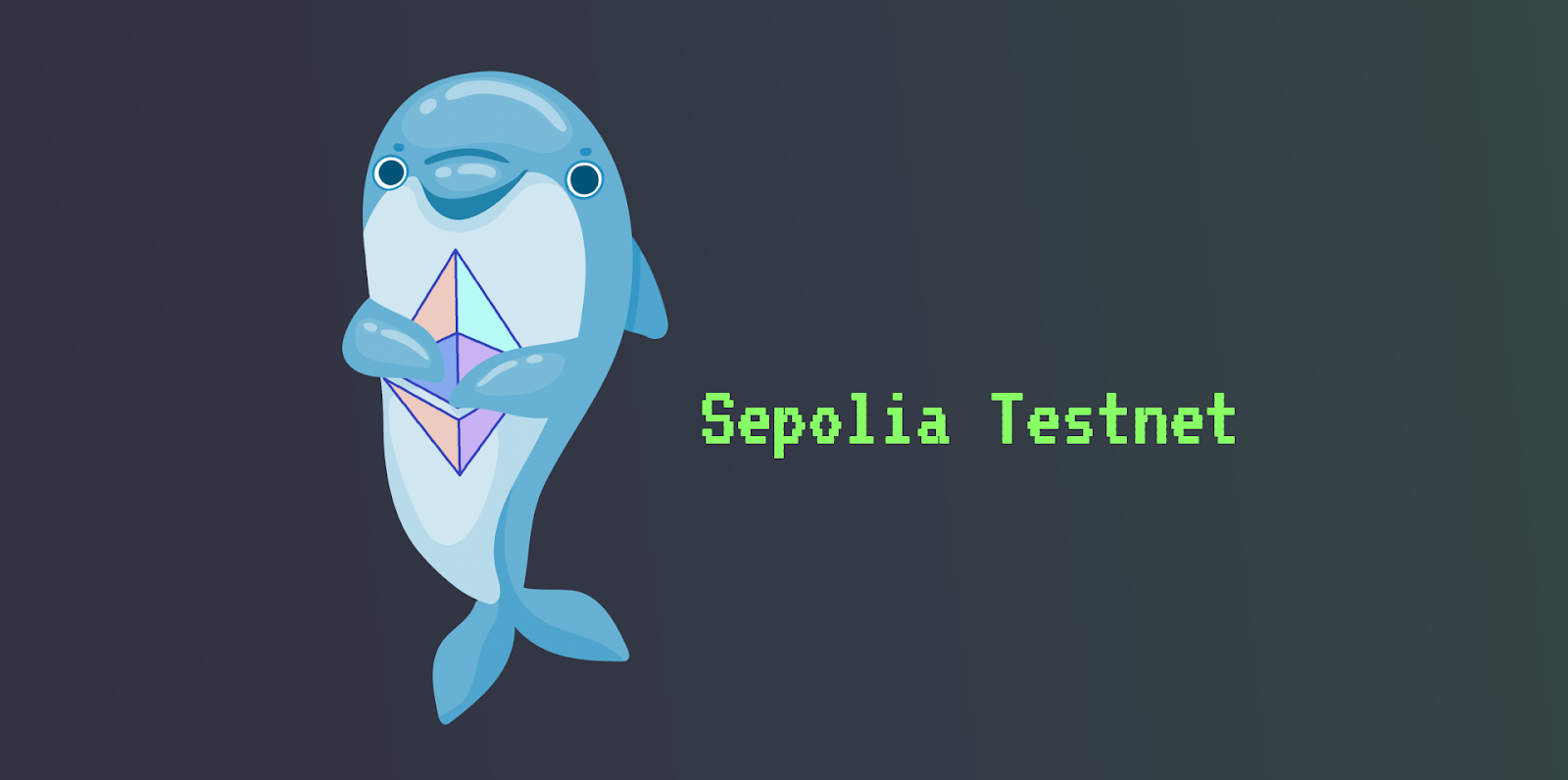
At launch in 2021, Sepolia originally implemented a proof-of-work (PoW) consensus mechanism. However, with the advent of The Merge, Sepolia joined with the PoS Sepolia Beacon Chain and – much like the Ethereum mainnet – now applies a PoS consensus mechanism. Since The Merge, Sepolia now mimics the Ethereum mainnet, making it suitable for testing smart contracts and dapps in an accurate environment.
However, why do you need a testnet such as Sepolia in the first place? If you did not already know, gas is required to pay for on-chain transactions. Consequently, it can become costly to develop dapps and other blockchain projects directly on a mainnet like Ethereum. This is where testnets like Sepolia enter the picture to provide a more economically friendly and seamless developer experience.
Sepolia is almost an identical copy of Ethereum, which Web3 developers can use to test-run their Web3 projects. As such, developers can design, create, test, and track their project’s public performance before committing to the Ethereum mainnet.
Sepolia Chain ID – What is Sepolia’s Chain ID?
Sepolia-based transactions require gas in the form of Sepolia testnet ETH. As such, you need tokens to run transactions on this testnet. Fortunately, it is possible to obtain Sepolia testnet ETH for free using a faucet! But, before you can do so, you must add the Sepolia testnet network to your wallet.
To add this network, you need to add specific network details to your wallet, such as the Sepolia chain ID, network name, etc. The Sepolia chain ID (11155111) is essential as the ID distinguishes the Sepolia chain from other testnet networks. Although the Sepolia testnet is included as a network by default in MetaMask, let’s see an example of how to use the Sepolia network details when adding the network to a wallet. To exemplify, let’s look at how to do so with MetaMask.
To start, open your MetaMask wallet and click on the “Ethereum Mainnet” drop-down button:
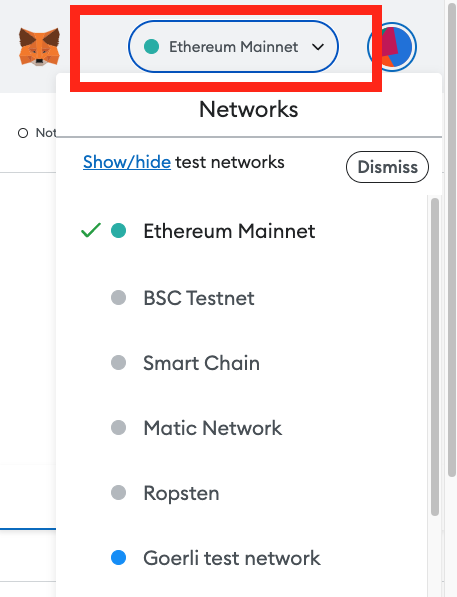
Scroll down and click on the “Add network” button:
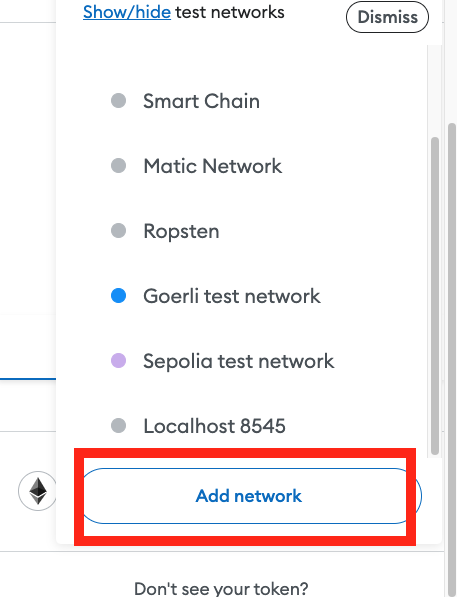
Then, click on the “Add a network manually” button:
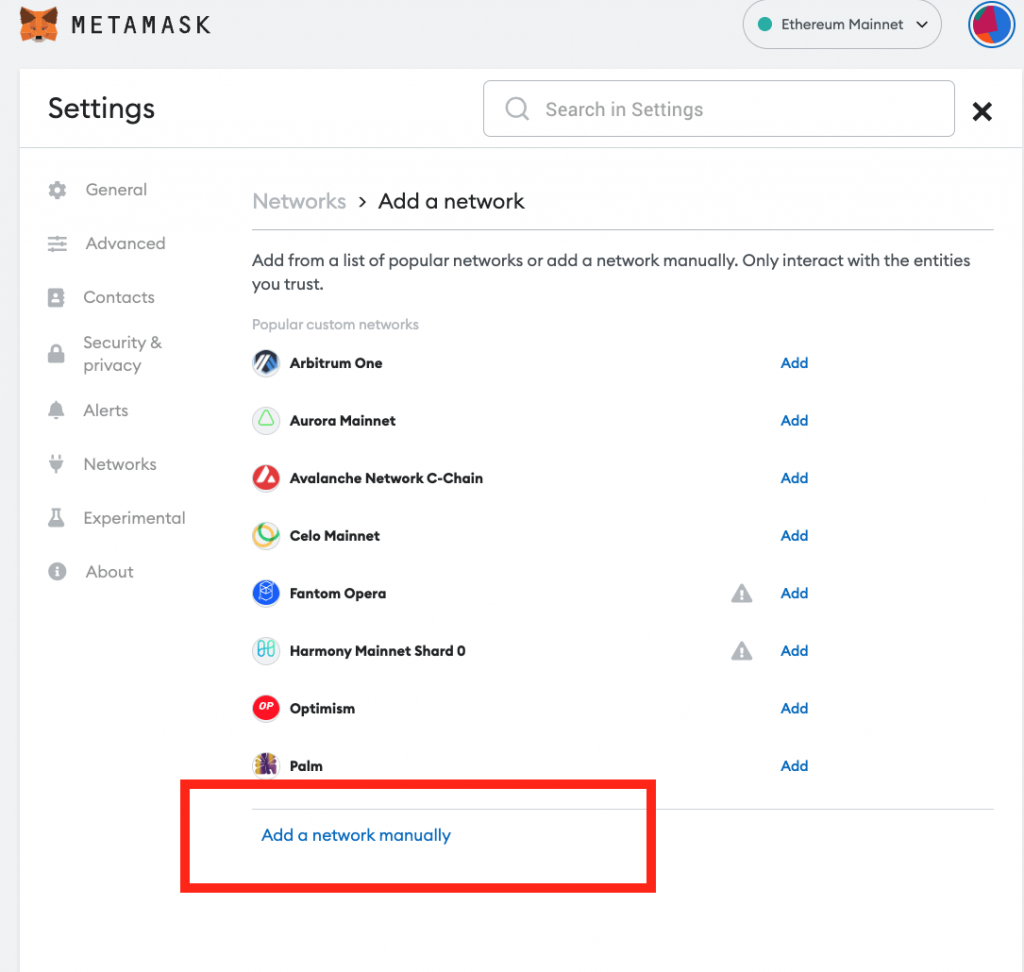
Now you need to enter a few details, including the network name, RPC URL, Sepolia chain ID, currency symbol, etc.:
Network Name: Sepolia test network
New RPC URL: https://sepolia.infura.io/v3/
Chain ID: 11155111
Currency Symbol: SepoliaETH
Block Explorer URL (Optional): https://sepolia.etherscan.io
Once you have entered all of the above details, you should be able to connect to the Sepolia testnet:
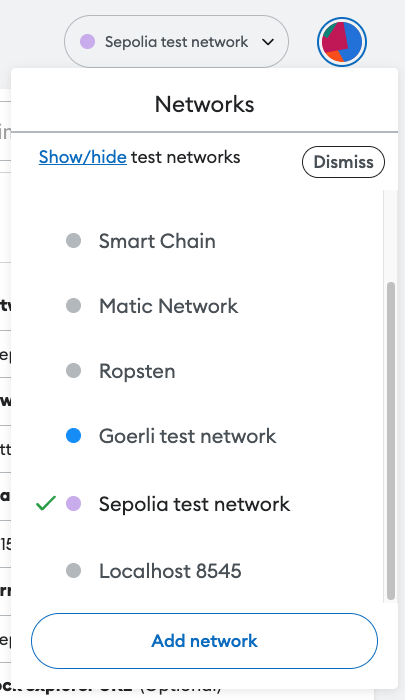
Now that we’ve added the Sepolia testnet using some of its network’s details, let’s move to the next section and see how to get Sepolia testnet ETH using a Sepolia faucet!
How to Get Sepolia Testnet ETH
Anyone can obtain Sepolia testnet ETH through a Sepolia testnet faucet, allowing developers to send small amounts of Sepolia ETH to their wallets. They can use the received ETH to pay for transactions on the Sepolia testnet. These testnet tokens mimic the functionality real ETH has on the Ethereum mainnet. Moreover, you can acquire Sepolia testnet ETH easily in only three steps:
- Visit Sepolia FaucETH – https://faucet.sepolia.dev.
- Add your wallet address or ENS name to the input field:
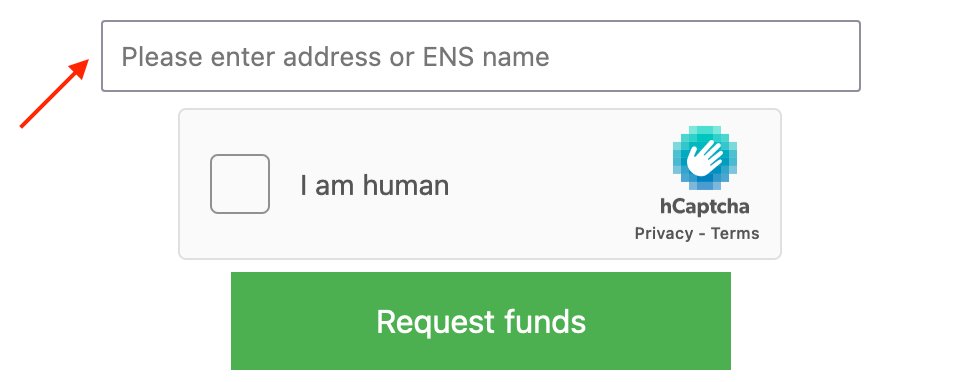
- Click on the captcha and the ”Request funds” button:
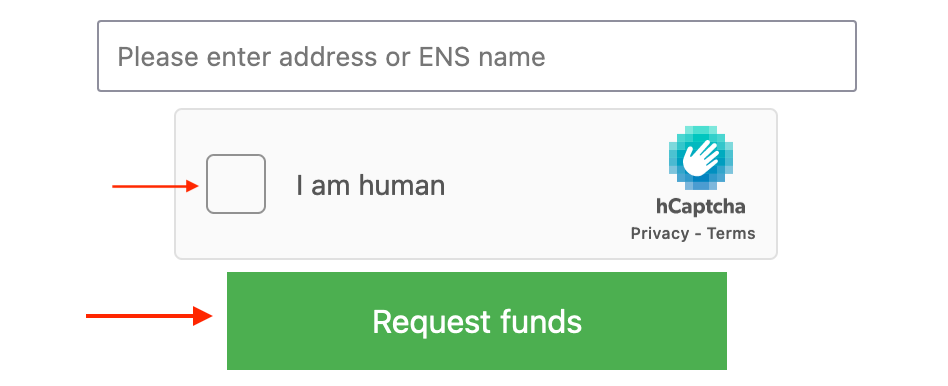
As soon as you click on the ”Request funds” button, you’ll see a pop-up window with a ”Transaction sent” message along with information about the amount of Sepolia testnet ETH sent to your wallet. As such, now that you have some Sepolia ETH at your disposal, you can immediately begin running smart contracts on the testnet!
How Does Sepolia Differ From Other Testnets?
Now that you are more familiar with what the Sepolia testnet entails and how to acquire Sepolia testnet ETH, let us compare this network to other prominent testnets you might have stumbled across during your Web3 development journey. So, without further ado, let us answer the question, ”how does Sepolia differ from other testnets?”.

In the past, Ethereum had many different testnets, such as Ropsten, Rinkeby, Kovan, etc. However, the aforementioned examples, and additional testnets, have now been deprecated. When this happens, the community stops supplying client updates. This does not mean that the networks completely disappear but rather lose parity with Ethereum Virtual Machine (EVM). As a result, deprecated networks are no longer accurate or safe environments for testing dapps and other Web3 projects.
Unlike Ropsten, Rinkeby, Kovan, etc., Sepolia is not deprecated and remains maintained by the Ethereum community. As such, the most significant way in which Sepolia differs from these testnets is the fact that it is continuously maintained. Accordingly, it is a suitable environment for testing Ethereum-based projects.
However, in combination with Sepolia, another testnet still maintained by the Ethereum community is Goerli. Thus, it becomes more interesting to compare these two networks since you’ll most likely use either of these during your Web3 development endeavors. But, before comparing Sepolia with Goerli, we need to dive deeper into the latter by answering the question, ”what is the Goerli testnet?”.
What is the Goerli Testnet?
Goerli, or Görli, was first introduced in 2018 and is, along with Sepolia, one of Ethereum’s most significant testnets. Goerli started as a hackathon project at ETHBerlin, but it was not until 2019 that this testnet officially launched in Berlin at the GörliCon. Moreover, like Sepolia, Goerli remains maintained by the Ethereum community, which can not be said for other prominent testnets that – as explained in the previous section – have been deprecated.
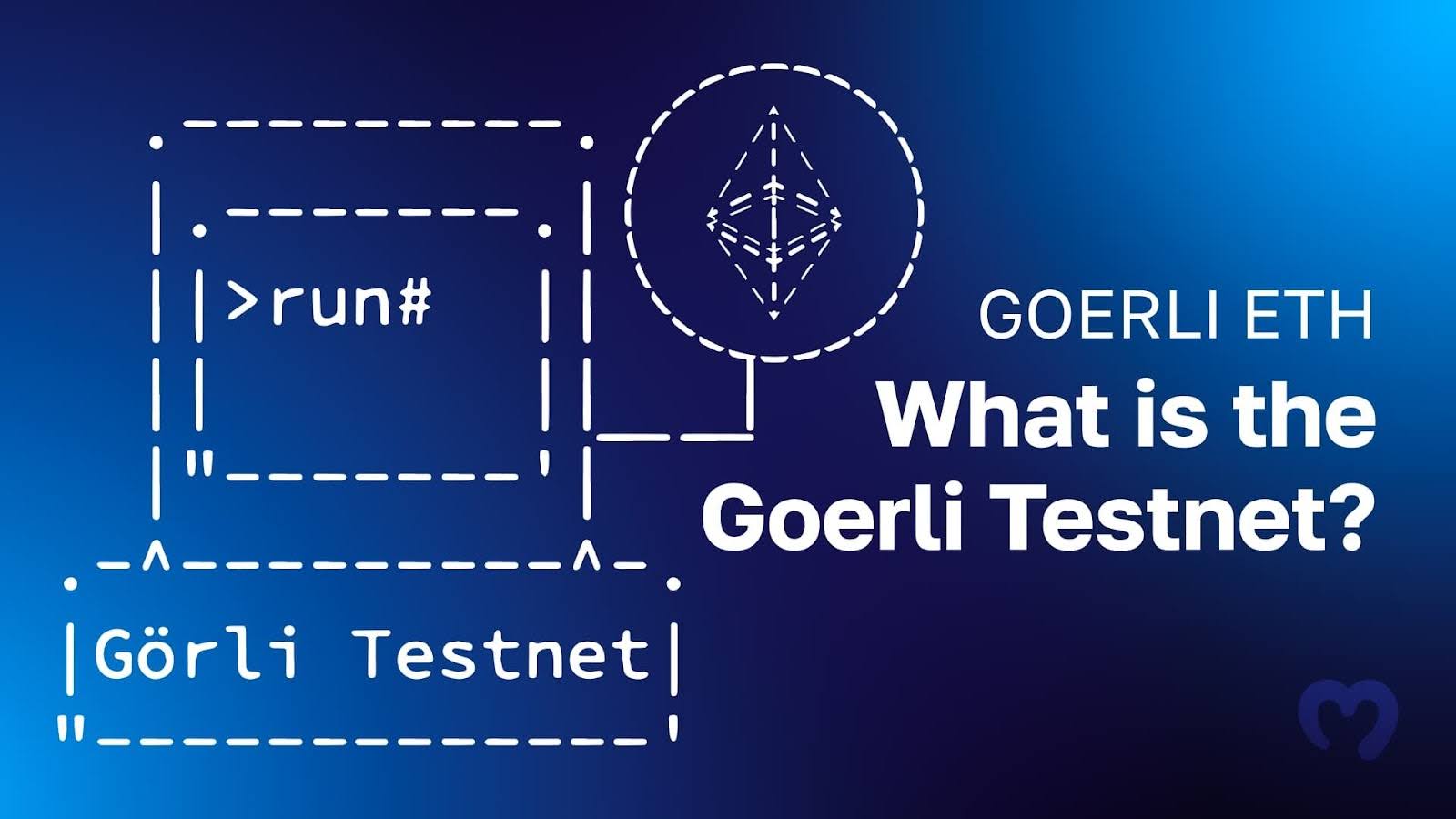
At the time of launch, Goerli was the first community-built, proof-of-authority (PoA) Ethereum testnet featuring cross-client functionality. However, just like Sepolia, Goerli transitioned from its original consensus mechanism to PoS during the advent of The Merge by merging with Beacon Chain.
So, what makes Goerli unique? As previously mentioned, Goerli features cross-client functionality – one of the testnet’s most significant strengths. Clients are essential to the Ethereum ecosystem, allowing developers to interact with the network using different programming languages. The Ethereum Foundation maintains various clients for different languages such as Java, Rust, Go, C#, and others. Some prominent client examples are Parity, Nethermind, and Geth. However, even though the mainnet supports different clients, the same could not be said for other testnets such as Rinkeby and Kovan.
As such, this is where Goerli entered the picture to provide synergies between clients in a single testnet. Hence, Goerli supports various clients and node software. This includes Geth, Parity, Nethermind, etc., meaning that there now is a unified testnet for Ethereum developers!
For more information on this testnet, check out our ”What is the Goerli Testnet?” article!
Nevertheless, now that you are more familiar with the Goerli testnet and what it entails, let us take the following section to compare Sepolia with Goerli!
Sepolia vs Goerli
Now that you have a more profound understanding of Sepolia and Goerli, this section will compare the two. In doing so, you will learn about the similarities and differences between the two testnets!

- Sepolia – Sepolia is the primary testnet recommended by Ethereum for dapp development. This testnet utilizes a permissioned set of validators and is relatively new, suggesting that its state and history are both relatively small. Consequently, running nodes require less storage, and the network can sync quickly. As a result, you can quickly spin up a node if you want to interact directly with the network. Nevertheless, down below, you will find three key Sepolia takeaways:
- Fast syncing
- A closed set of validators
- Relatively new testnet hosting fewer apps than other networks
- Goerli – Goerli is the recommended testnet for executing testing of validating and staking. What’s more, unlike Sepolia, Goerli is open to all developers that want to run their own testnet validator. As such, stakers looking to test a new protocol upgrade should use this testnet before committing to the Ethereum mainnet. You can find three important Goerli takeaways down below:
- An open set of validators
- Large stage – helpful for testing complicated smart contracts
- More storage for running nodes and longer syncs
Nonetheless, based on the brief descriptions above, it is possible to identify differences between the testnets, which are suitable for different scenarios. Consequently, whether you go for Sepolia or Goerli in your development endeavors should be dependent on the project you are creating.
Sepolia Testnet Explorer – Sepolia Etherscan
In this section, we will briefly dive into Sepolia Etherscan – a Sepolia testnet blockchain explorer. However, you might not be familiar with what blockchain explorers are. Therefore, to begin with, let us start by answering the question, ”what is a blockchain explorer?”.
A blockchain explorer is a piece of software using nodes and APIs to acquire on-chain data from their respective networks. Moreover, they also feature online interfaces. Hence, they allow users to search a network seamlessly. Moreover, through a blockchain explorer, Web3 developers can easily retrieve data regarding blocks, addresses, fees, transactions, and much more! For instance, users can input a contract address and receive associated information displayed neatly in a table:
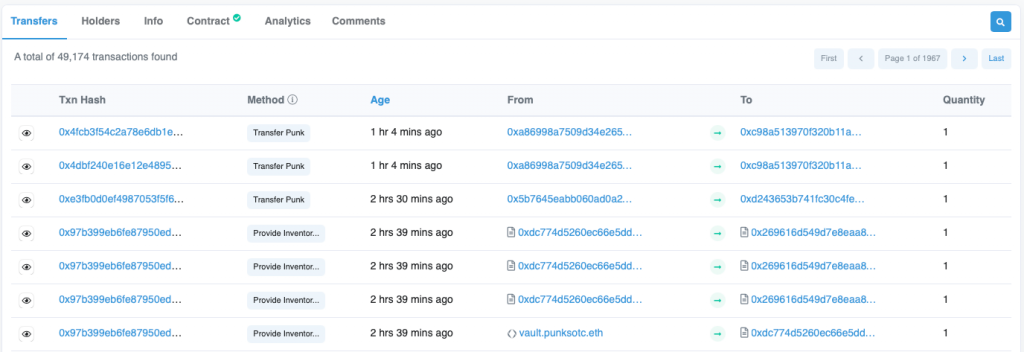
The screenshot above features an example from Etherscan. If you did not know, Etherscan is one of the most significant Ethereum blockchain explorers. Moreover, as testnets are their own blockchain separate from the mainnet they mimic, they also have their own explorers. This is true for Sepolia as well, and a great example is Sepolia Etherscan:
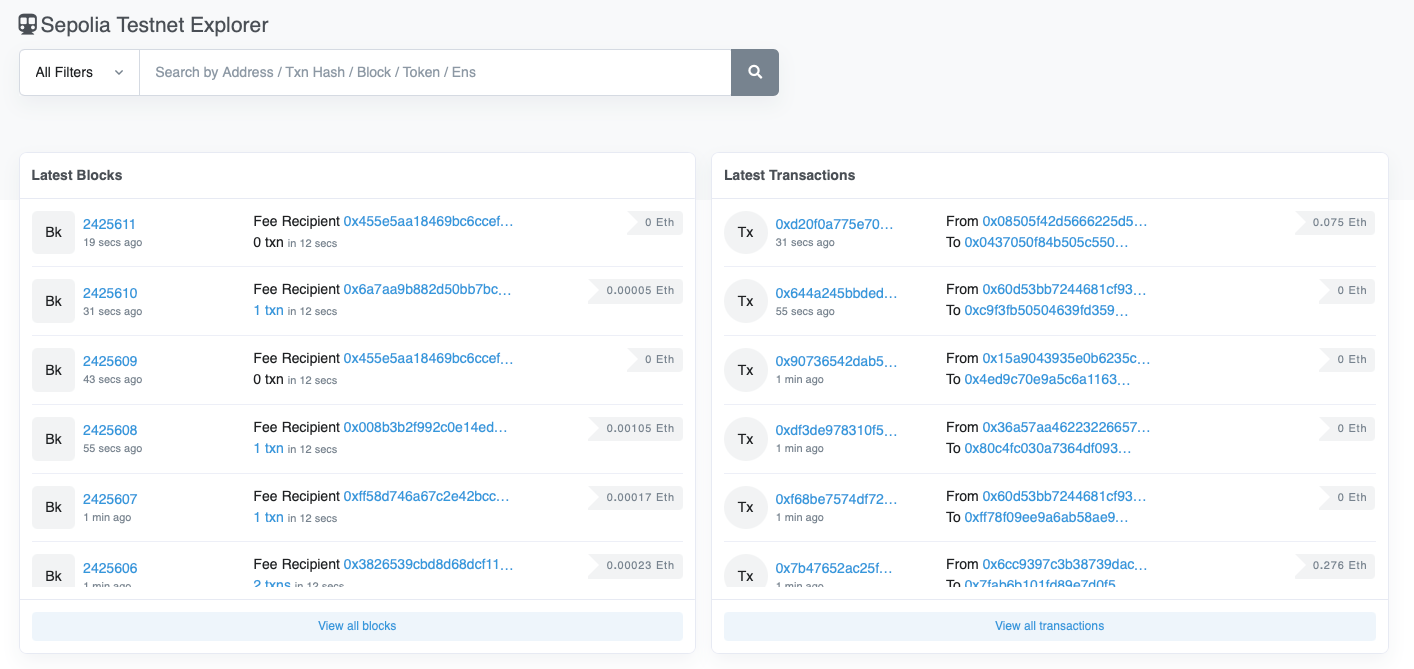
Sepolia Etherscan is a Sepolia blockchain explorer providing easy access to on-chain data associated with the testnet. Hence, developers can use this tool for many different use cases. For example, developers can check if their contracts deployed successfully, look up block data, view transaction histories, etc. As such, Sepolia Etherscan is an excellent development tool that can aid Ethereum developers in monitoring their projects’ performance on the testnet!
If you have joined us this far, you now have a better overview of the Sepolia testnet and the Sepolia Etherscan explorer!
Sepolia Testnet Guide – Summary
Sepolia first launched in 2021 and is, along with Goerli, one of two Ethereum testnets currently maintained by the community. At first, Sepolia featured a PoW (proof-of-work) consensus mechanism. However, thanks to The Merge, the testnet transitioned from PoW to PoS (proof-of-stake) to mimic the Ethereum mainnet. Moreover, among the two maintained primary Ethereum testnets, Sepolia is the one recommended by the community for dapp (decentralized application) development.
Testnets are some of the Web3 developers’ most valuable tools since they allow developers to save valuable resources and time. Consequently, through a testnet such as Sepolia, developers can test the public performance of all their projects before deploying them to the Ethereum network!
If you are serious about getting into Web3 development, consider joining Moralis. Moralis offers various enterprise-grade development tools that allow you to fully leverage the power of blockchain technology. For instance, a great example is the Web3 Streams API. With this tool, you can stream on-chain data into the backend of all your projects using Moralis webhooks!

Moreover, if you want to become a more proficient Web3 developer, enroll in Moralis Academy today! The academy offers many great courses for new and more experienced developers. For example, learn the basics of the industry with the following course: ”Blockchain & Bitcoin Fundamentals”.
Nevertheless, to access a more seamless developer experience, sign up with Moralis immediately. You can create an account for free, and it only takes a couple of clicks, so you have nothing to lose!
